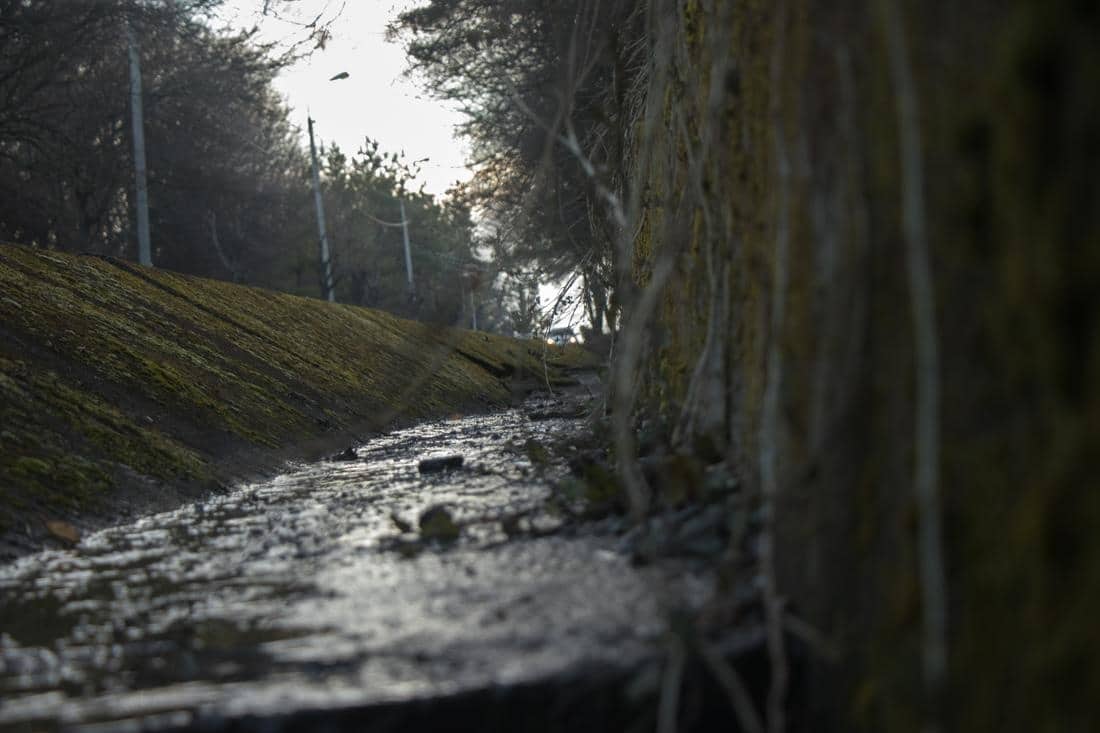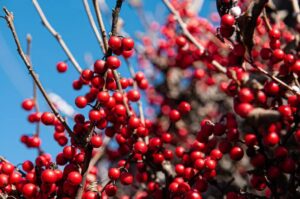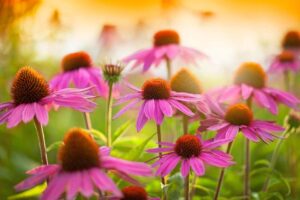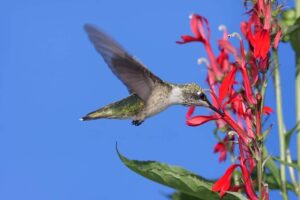Native Plants to Establish Rain Gardens
A storm water garden is a small planted depression that collects and stores rainwater runoff from impervious surfaces like roads, rooftops, and compacted lawns. A rain garden slows water flow, allowing it to percolate into the soil rather than entering storm drains. Storm water gardens are often planted with native plants and grasses with root systems that absorb rainfall and allow the rain to percolate into the ground.
Why Should You Create a Rain Garden?
According to government research, storm water runoff from impervious surfaces is responsible for most of the pollutants in our rivers, lakes, and streams. A rain garden functions as both a sponge and a filter, capturing rainfall and the contaminants it transports.
Impervious surfaces have taken the role of soils that would typically absorb precipitation, allowing them to seep in and replenish our groundwater. As a result, the amount of storm water (volume) in streams after a rain increases, as does the pace at which it moves (velocity). As a result, storm water pollution increases water pollution, erodes stream banks, expands creek beds, and causes property damage, sedimentation, and floods if not treated.
A rain garden improves water quality, beautifies the land, and provides a home for animals such as birds and butterflies.
Large-scale adoption and usage of rain gardens in a community can save tax dollars by eliminating the need to construct more extensive storm water drainage infrastructure and initiatives to stabilize stream banks.
 Plant Selection for Your Rain Garden
Plant Selection for Your Rain Garden
Modern storm water management systems rely on plants to contain soil, filter pollutants, absorb nutrients, intercept and transpire water, and promote healthy and diverse soil biology. Engineers are only now realizing the value that landscapers can provide in helping green infrastructure survive and prosper. A vital initial stage in the effectiveness of biofilters, bioswales, rain gardens, and other vegetated storm water management systems is the selection of suitable plants. But remember that plant choice only goes so far; for long-term success, a maintenance plan must be established, which is not covered here.
Examine the Location and Situation
Plant selection, like any other landscaping project, should begin with a thorough examination of the site and environment. Not all biofilters, rain gardens, or bioswales are the same, and they may necessitate plants that can withstand various harsh environments. If the underlying soils are clay or drainage is constrained by impermeable layers underneath, bioswales made from native soils may store water for days. Newer storm water management biofiltration zones may infiltrate up to 20-30″ of water per hour through a highly well-drained matrix of sand, rock, loam, or compost. In most circumstances, root zone saturation is transitory, and plants are more likely to be challenged by drought than by continuous wet feet.
Organic waste products and volatile organic compounds (from oil and gas) may be present in runoff from roads and parking lots and inorganic pollutants such as road salt, silt, and litter. Nutrient levels may increase with the initial flush but plummet with regular storm-water cleansing. What other difficulties does the location provide? Are there invasive plants nearby? Buildings creating reflected heat or shadows? What about wind exposure? What about foot traffic? The plants had better brace themselves for virtually anything!
Furthermore, towns or other agencies in charge of upkeep may create some difficulties. Mowing may come naturally to them, but removing silt, weeding, pruning, and other plant management activities are unlikely to be completed unless a plan (and some training) is in place or a contract with a landscape maintenance service is in place. What about during the winter? Does the rain garden turn into a snowdrift? If we don’t want damaged trunks and branches, we should avoid planting trees and bushes.
Plantings in Layers
Deciduous trees may transpire a lot of water in the summer, but they should only be included if there is enough soil volume (width and depth) and area for the canopy to grow. Suitable species are most likely to thrive in the compacted, weak soils typical of many metropolitan environments.
Planting in layers is another method for increasing leaf density and transpiration.
Rhodora (Rhododendron canadense), Red or Black Chokeberry (Aronia arbutifolia or A. melanocarpa), Red-twigged or Silky Dogwood (Cornus amomum or C. sericea), Buttonbush (Cephalanthus occidentalis), Winterberry (Ilex verticillata), Rhodora (Rhod (Hydrangea quercifolia), Witch Hazel (Hamamelis virginiana), Cranberry (Vaccinium macrocarpon) and low-bush Blueberry (Vaccinium angustifolium), as well as several ferns and sedges, are excellent acid-soil ground coverings.
Suckering plants like Summersweet Clethra (Clethra Alnifolia) and Fragrant Sumac (Rhus Aromatica) can quickly fill in dry patches and keep weeds at bay. However, the plants described best suit the rain garden’s wetter bottom zone. In contrast, other plants that can endure occasional, but not consistent, wetness can be utilized on the sides and higher margins of buffers, bioswales, and rain gardens. Examples include Northern Bayberry (Myrica Pensylvanica), Sweet Fern (Comptonia Peregrina), and various Viburnum species.
Plant for Particular Conditions
Choose plant groupings that require the same pH and soil moisture. Do you have a partial-shade rain garden with damp, acidic soils? For year-round appeal, mix Pink Shell Azalea (Rhododendron Vaseyi) or Swamp Azalea (Rhododendron Viscosum) with high-bush or low-bush Blueberry (Vaccinium Corymbosum or V. Angustifolium), ferns and/or sedges, and Maybe Winterberry (Ilex Verticillata).
Small domestic rain gardens, as opposed to designed systems, appear more like gardens and can be thickly planted with your preferred plants. After a storm, these gardens should not keep water for longer than 24-48 hours. There are far too many Herbaceous Perennials to list — choose the proper position (low or high on the bank?) for each of your favorites. Blue Flag Iris (Iris versicolor) is a plant that appears to be well adapted to the rain garden’s lowest section — we’ve seen it thrive when many other species have failed. Aside from its beautiful red color, the nice thing about the Cardinal Flower (Lobelia cardinalis) is that it reseeds and will travel over time to settle in its favorite position. Brown-eye or Black-eyed Susans (Rudbeckia Hirta or R. Triloba) or Purple Coneflower (Echinacea Purpurea) are versatile and famous for their lengthy bloom periods; however, they prefer the higher zones rather than damp soil.
Do you need a colorful meadow planting for a low-maintenance bioswale? Choose native perennials that will provide you with year-round color while providing habitat for numerous birds and pollinators. In addition, meadow plants’ tough, deep root systems allow them to withstand drought and floods while enriching the soil. It could take two to three years for a newly planted meadow to mature into a lively and colorful plant community. Still, once there, it will provide season-long beauty and animal habitat with minimum upkeep. However, remember that many meadow plants are tall and floppy late in the season and may not look right in the heart of a perfectly manicured landscape. You may get a more refined meadow effect by picking compact perennial varieties and spacing them in a garden, but they will require more upkeep over time.
Having the Right Mix of Native Plants
Golden Alexanders (Zizia aurea), Cardinal Flower (Lobelia cardinalis), New England Aster (Aster Novae-Angliae), Swamp Milkweed (Asclepias Incarnata), Tall Ironweed (Veronia Altissima), and Joe Pye Weed are all suitable for moist to wet soils (Eupatorium Maculatum). In addition, from May to September, Bergamot (Monarda Fistulosa), Asters (Aster spp. ), Butterfly Weed (Asclepias Tuberosa), Coreopsis (Coreopsis lanceolata), Lavender Hyssop (Agastache Foeniculum), Brown-eyed or Black-eyed Susan (Rudbeckia spp.), and Ox-eye Sunflower (Heliopsis Heliant).
Don’t forget to include some decorative grasses in the mix; indigenous such as Little Bluestem (Schizachyrium Scoparium), Virginia Wild Rye (Elymus Virginicus), Switchgrass (Panicum Virgatum), and Indian grass (Sorghastrum Nutans) have done well for us in damp to dry soils. Maiden grass (Miscanthus Sinensis) is a vast, popular non-native grass that can resist the harsh circumstances of designed rain gardens, including flooding. However, Big Bluestem (Andropogon Gerardii) might be used as an alternative.
Creating the Perfect Rain Garden
If you are interested in installing a rain garden on your property, please contact Down to Earth Services. We would be happy to help you design and install a rain garden that will collect and store stormwater runoff from your impervious surfaces. Our team of experts can help you choose the right plants for your climate and soil type, and we will make sure your rain garden is installed correctly so it can function properly.











